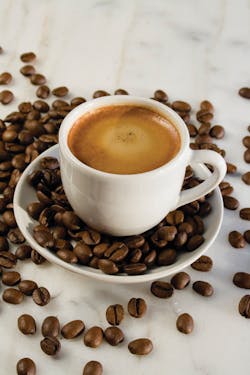Study: Coffee, Tea Industry Heavily Divided Between Independents And Chains
With the 26th annual Specialty Coffee Association of America (SCAA) event taking place in Seattle, Wash., CHD Expert, a foodservice data and analytics firm based in Chicago, Ill., has released the latest figures around the coffee and tea industry in the U.S.
CHD Expert's data shows that the coffee and tea industry is showing positive signs of growth, having achieved 0.9 percent in net growth between 2009 and 2013. This segment growth is consistent with the commercial foodservice market's overall net growth of 2.6 percent in that same time period. Moreover, as one of America's favorite drinks, it is no surprise that coffee and tea is the 8th most prevalent menu type among U.S. restaurants. With over 28,000 establishments, the coffee and tea segment represents 4 percent of the top ten most popular menu types and 4.2 percent of the approximately 665,000 total U.S. restaurants.
As with many other foodservice segments, the coffee and tea industry is heavily divided between independent operators and chains. In particular, most of the market is split between independent operators (1 to 9 units), which account for 40.7 percent of the market, and chains with more than 500 units, account for 52.4 percent of the total market. Mid-range chains (those with 10 to 500 units) are much less prevalent, constituting only 6.9 percent of the market.
Geographically, CHD Expert finds that the states of California, New York, Massachusetts, Florida and Washington dominate in terms of number of establishments. Approximately 39 percent of the nation’s total coffee establishments reside in those 5 states.
When focusing only on the chain operators within the industry, Illinois replaces Washington in the lineup as the fifth state with the most number of units. Under this scenario, the top five coffee chain states represent 43 percent of the national coffee and tea market. Unsurprisingly, Starbucks is the chain with the most number of units, followed by Dunkin Donuts, Tim Hortons, Caribou Coffee and Coffee Bean & Tea Leaf. Starbucks is the only chain that boasts at least one store with over $5 million in annual sales, and 6 locations with more than $2.5 million in annual sales.
As the “coffee capital” and founding city of the largest industry chain, Seattle, Wash., is an important figure in the U.S. coffee and tea landscape. With a booming coffee culture – from coffee roasting to supply chain management - Seattle consumes its fair share of coffee. Starbucks leads the way among chain establishments, but the overall coffee and tea landscape in Seattle is dominated by independent operators. Of the 280 total Seattle coffee establishments in the CHD FIND Database, independent coffee and tea houses represent 58 percent of the overall market.
“Globally, coffee and tea are some of the most universally consumed food products, and an important part of American culture,” said Brad Bloom, director of sales at CHD Expert North America, in a prepared statement. “For many Americans, getting a cup of coffee is one of the first things to do in the morning, and this has led to a robust product mix, with consistently high demand. At CHD Expert, we have our pulse on the coffee industry and it is racing. If you are looking for insight on coffee, make sure you get in touch, we’d love to share our data.”
